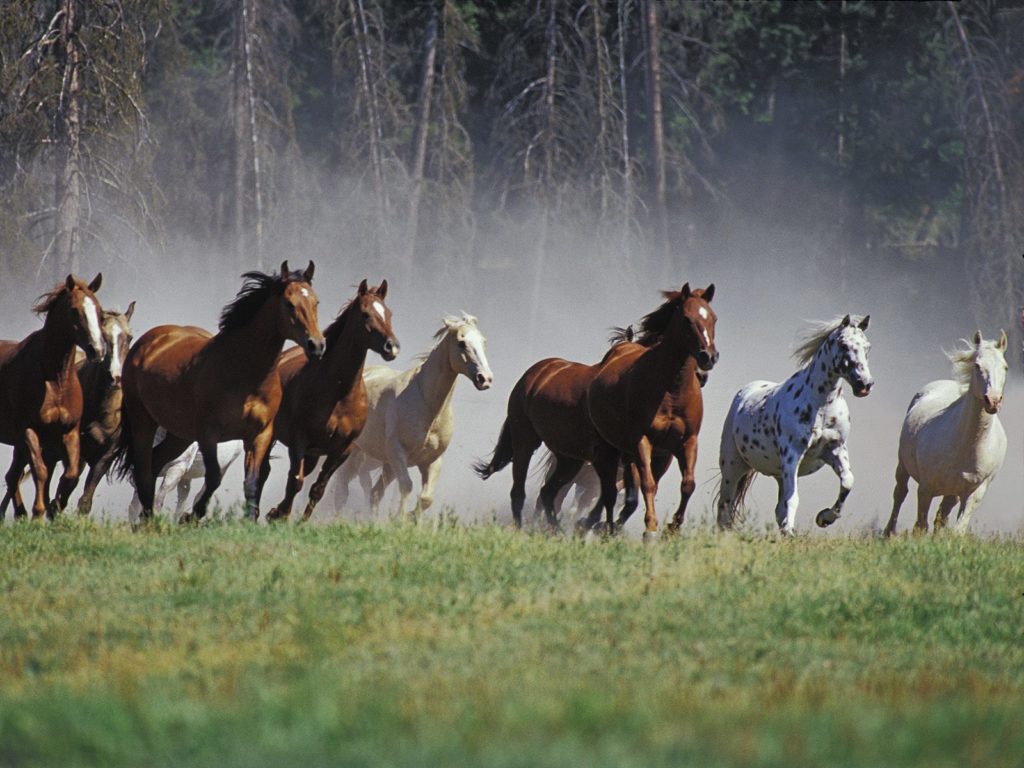Question:
We have a somewhat green mare who is doing very well learning to trail ride. Until we start to come back and we get to near her field. Then she is a major pain…constantly pulling, not responding to the bit…I have been doing circles with her, but yesterday she was really pulling hard on the bit and I nearly lost control. Any suggestions?
Answer
What your mare is doing is very common, and also very difficult to fix. Not that it’s difficult to DO, but that it is is very time-consuming. The first thing you want to make sure is that your mare knows how to give to the bit. Both laterally and vertically. Practice that until all you need to do is squeeze your fingers and she softens and gives in that direction. You will also need to make sure she understands how to move laterally off of the rider’s leg. Practice this until all it takes is a bit of shift in the rider’s weight (for example, to the right) and a gentle squeeze of the left leg to get her to step her hindquarters to the right. Practice this in both directions until she is soft and responsive.
Then, when she is pulling to go home, don’t pull back with both reins, you must disengage the hindquarters, which is where her “pull” is coming from. She is, in reality, pushing from her hindquarters into your hands.
You disengage the hindquarters by asking for her to move her hips over with your leg and by asking her to give to the bit (by tilting her nose) in the opposite direction. You can go back and forth between both directions. Do this EVERY time she pulls on you, even a small bit.
If this is not sufficient, then you will need to simply stop continuing towards her “home” and start doing a bit of schooling right there where she is, so make sure that when you are working on this problem, you pick areas that give you some room to work. Now, I want to be clear, here. You do not want to simply “stop going home” without a plan, that will just make a horse more agitated. Rather, focus on true schooling. Begin schooling circles, figure eights, moving the haunches, backing, etc, and really, truly focus on the movements, on getting them correct. For example, on a circle, focus that the circle is truly round, and that your mare is straight on the circle (bending through the body so that her spine matches the bend of the circle and the imaginary line of the circle runs between her left legs and right legs), make sure that both halves of the figure eight are the same and that she does a smooth change of bend in the middle, and so on. DON’T focus on “keeping her from going home” but DO focus on getting the exercise correct. In other words, give her a job to do……..give her something very definite to think about BESIDES going home. Take your time and expect to be there for a bit. 😉
When she is listening, you can calmly start going towards home again, and as soon as she starts pulling, begin again with disengaging the haunches a few times, and if needed, proceed into stopping right where you are and schooling figures again.
Eventually she will realize that every time she goes against her proper training and starts pulling against the bit, she will have to stop and have a “re-training” session. As long as she is listening to the bit, she can continue on towards home.
Once you do get home, DO NOT put her away right away, but take time to do more schooling. Even get off, take a break (without unsaddling) and then do some schooling or go back out again. Make some of your rides be something like this: go out for ten minutes, come home, go back out for ten minutes, come home, go back out, etc., so that she does not think that if she can just get you home, you will get off and put her away. In other words, take away the anticipation of “going home.” 😉 Make her go back out, or make her do some schooling when she does get back. A great technique is to have her work harder (serious schooling exercises) while at home, and have the short trail ride be relaxed and enjoyable “time off” (so long as she is behaving).
The trick is to keep yourself thinking about this as a training problem (she is not listening to the rider’s cues) and not a specifically “going home” problem………that way, you will have more of the mindset of “how can I get her to listen to me better in all situations” rather than “how can I keep her from dragging me home.” The first way of thinking encourages you and her to work together, the latter way encourages you and her to fight over something. Because the bottom line is that she is not listening to you in all situations………and if you allow her to disregard you in one situation, she will do so in more and more situations, anytime the situation does not “suit” her. It will escalate.
Basically, there is no quick fix to this problem. But it is very common and pretty much every horse will do this to some extent or another at some point. However, if you DON’T get it under control, it can very quickly become dangerous.
